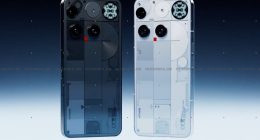Embedded systems are designed to perform a certain function either independently or as a part of a bigger system. They are hardware systems with built-in software, which have an integrated circuit at their cores that carries out computations for real-time operations.
Their complexity can vary from a single microcontroller to a suite of processors, and from a no-user interface to complex graphical user interfaces. The task for which the embedded systems are designed usually determines their complexity.
Do you wonder where you can find the embedded systems around you? Well, they are integrated into digital watches, microwaves, hybrid vehicles and so much more. And did you know that you can build an embedded hardware design on your own with just a little help?
Embedded Systems Definition
If you are looking for a super simple definition of embedded systems, here it is: embedded systems are a combination of software and hardware that can be programmed or fixed in capability. They are most often designed for a particular function in small or within larger systems.
Embedded Systems Example
These systems can be incorporated in a vast number of technologies in plenty of different industries. We can find them in:
- Automobiles: Modern and contemporary cars have hundreds of computers integrated into them. They perform an array of different tasks in the vehicle such as basic utility functions to entertainment functions.
- Mobile phones: Cameras, microphones, GUI software and hardware, USB, operating systems and many more are the embedded systems that are integrated into the mobile phones which we are using daily.
- Industrial machines: These machines consist of plenty of sensors and they are often automated embedded systems that perform many control functions and specific monitoring.
- Medical equipment: The medical equipment has to be really user-friendly in order not to put human health into jeopardy by machine mistakes. It often includes some really complex systems like control mechanisms and sensors.
Characteristics of Embedded System
- Single-functioned – It’s an embedded system that performs a specialized operation and does the same thing repeatedly. For example, a pager always works like a pager.
- Tightly constrained – It’s a well-known fact that all computing systems are having constraints on design metrics, but the embedded ones are super tight. Do you know what design metrics are? It’s a measure of implementation features like performance, power, size, and cost. It should work really fast and process the data in real-time while doing all of that by consuming minimal parts in order to save the battery and extend its life.
- Reactive and Real-time − Embedded systems are expected to continually react to changes in the system’s environment. They must compute the results in real-time without any delay. Let’s take for example a car cruise controller; it should monitor and react to speed and brake sensors continually. It should also compute the acceleration or de-accelerations repeatedly within a limited time; a delayed computation can result in failure to control the car.
- Microprocessors based − It must be microprocessor or microcontroller-based.
- Memory − It requires memory and it’s often embedded in ROM. It doesn’t require any secondary memories.
- Connected − It must have connected peripherals to connect input and output devices.
- HW-SW systems − This software is used for more flexibility and features, while the hardware is used for performance and security.
Basic Structure of an Embedded System
Read more to discover the basic structure of an embedded system:
- Sensor − the sensor is used to measure the physical quantity and it converts it to an electrical signal. An electronic instrument such as A-D converter or an observer can read it. The measured quantity is stored in the memory.
- A-D Converter – the abbreviation stands for an analog-to-digital converter. It is used to convert the analog signal sent by the sensor into a digital signal.
- Processor & ASICs – these processors process the data to measure the output. Then they store it to the memory.
- D-A Converter –the abbreviation stands for a digital-to-analog converter. It converts the digital data fed by the processor to analog data.
- Actuator − The actuator is the part that is responsible for comparing the output given by the D-A Converter to the actual (expected) output stored in it and stores the approved output.



